Optimizing HMI for Intelligent Electric Vehicles Using BCI and Deep Neural Networks with Genetic Algorithms
Abstract
1. Introduction
2. Literature Review
2.1. BCIs in Operating HMIs of Intelligent Electric Vehicles
2.2. Research on Intelligent Algorithms for HMIs in Intelligent Electric Vehicles
2.3. Reliability and Validity of Experimentation in Simulating Real Driving Scenarios
3. Methodology
3.1. Analysis of Elements for HMIs of Intelligent Electric Vehicles
3.2. DNN-GA Intelligent Algorithm
3.2.1. Topology of DNN
3.2.2. GA Intelligent Algorithm
3.2.3. Chromosome Encoding and Decoding in HMI of Intelligent Electric Vehicles
4. Experiment
4.1. Experimental Process
4.2. Data Collection
5. Results
5.1. Analysis of EEG Data
5.2. DNN Model
5.2.1. Fitness Function of GA
5.2.2. Genetic Evolution Process
5.2.3. Evolution Process of Genetic Algorithm
5.3. DNN-GA Model Performance Evaluation
- : total number of samples.
- : predicted e-Sense value for the i-th sample.
- : actual e-Sense value for the i-th sample.
- ∑: summation symbol, indicating that the sum is taken over all samples from i = 1 to i = n.
- : the squared difference between the predicted and actual e-Sense values for the i-th sample.
- the absolute difference between the predicted and actual e-Sense values for the i-th sample.
- : represents the variance that is not explained by the model.
- : represents the total variance in the data.
6. Conclusions
6.1. Implications for HMI of Intelligent Electric Vehicles
6.2. Limitations of the Study
Author Contributions
Funding
Data Availability Statement
Conflicts of Interest
References
- Blankertz, B.; Acqualagna, L.; Dähne, S.; Haufe, S.; Schultze-Kraft, M.; Sturm, I.; Ušćumlic, M.; Wenzel, M.A.; Curio, G.; Müller, K.-R. The Berlin brain-computer interface: Progress beyond communication and control. Front. Neurosci. 2016, 10, 530. [Google Scholar] [CrossRef] [PubMed]
- Li, W.; Duan, F.; Sheng, S.; Xu, C.; Liu, R.; Zhang, Z.; Jiang, X. A human-vehicle collaborative simulated driving system based on hybrid brain–computer interfaces and computer vision. IEEE Trans. Cogn. Dev. Syst. 2017, 10, 810–822. [Google Scholar] [CrossRef]
- Yu, Y.; Zhou, Z.; Yin, E.; Jiang, J.; Tang, J.; Liu, Y.; Hu, D. Toward brain-actuated car applications: Self-paced control with a motor imagery-based brain-computer interface. Comput. Biol. Med. 2016, 77, 148–155. [Google Scholar] [CrossRef]
- Tan, Z.; Dai, N.; Su, Y.; Zhang, R.; Li, Y.; Wu, D.; Li, S. Human–machine interaction in intelligent and connected vehicles: A review of status quo, issues, and opportunities. IEEE Trans. Intell. Transp. Syst. 2021, 23, 13954–13975. [Google Scholar] [CrossRef]
- Hekmatmanesh, A.; Nardelli, P.H.; Handroos, H. Review of the State-of-the-art on Bio-signal-based Brain-controlled Vehicles. arXiv, 2020; arXiv:2006.02937. [Google Scholar]
- Gabbard, J.L.; Fitch, G.M.; Kim, H. Behind the glass: Driver challenges and opportunities for AR automotive applications. Proc. IEEE 2014, 102, 124–136. [Google Scholar] [CrossRef]
- Riegler, A.; Riener, A.; Holzmann, C. A systematic review of augmented reality applications for automated driving: 2009–2020. PRESENCE Virtual Augment. Real. 2019, 28, 87–126. [Google Scholar] [CrossRef]
- Cernea, D.; Olech, P.S.; Ebert, A.; Kerren, A. Controlling in-vehicle systems with a commercial eeg headset: Performance and cognitive load. In Visualization of Large and Unstructured Data Sets: Applications in Geospatial Planning, Modeling and Engineering-Proceedings of IRTG 1131 Workshop 2011; Schloss Dagstuhl-Leibniz-Zentrum für Informatik: Wadern, Germany, 2012. [Google Scholar]
- Ba, T.; Li, S.; Gao, Y.; Wang, S. Design of a Human–Computer Interaction Method for Intelligent Electric Vehicles. World Electr. Veh. J. 2022, 13, 179. [Google Scholar] [CrossRef]
- Young, G.; Milne, H.; Griffiths, D.; Padfield, E.; Blenkinsopp, R.; Georgiou, O. Designing mid-air haptic gesture controlled user interfaces for cars. Proc. ACM Hum. Comput. Interact. 2020, 4, 1–23. [Google Scholar] [CrossRef]
- Ma, J.; Gong, Z. Automotive Human-Machine Interaction HMI Evaluation Method; Springer: Berlin/Heidelberg, Germany, 2024. [Google Scholar]
- Aricò, P.; Borghini, G.; Di Flumeri, G.; Sciaraffa, N.; Babiloni, F. Passive BCI beyond the lab: Current trends and future directions. Physiol. Meas. 2018, 39, 08TR02. [Google Scholar] [CrossRef] [PubMed]
- Aledhari, M.; Rahouti, M.; Qadir, J.; Qolomany, B.; Guizani, M.; Al-Fuqaha, A. Motion comfort optimization for autonomous vehicles: Concepts, methods, and techniques. IEEE Internet Things J. 2023, 1, 378–402. [Google Scholar] [CrossRef]
- Biswas, A.; Wang, H.-C. Autonomous vehicles enabled by the integration of IoT, edge intelligence, 5G, and blockchain. Sensors 2023, 23, 1963. [Google Scholar] [CrossRef] [PubMed]
- Ye, Y.; Zhang, X.; Sun, J. Automated vehicle’s behavior decision making using deep reinforcement learning and high-fidelity simulation environment. Transp. Res. Part C Emerg. Technol. 2019, 107, 155–170. [Google Scholar] [CrossRef]
- Xing, Y.; Lv, C.; Cao, D.; Hang, P. Toward human-vehicle collaboration: Review and perspectives on human-centered collaborative automated driving. Transp. Res. Part C Emerg. Technol. 2021, 128, 103199. [Google Scholar] [CrossRef]
- BEng, T.G.S. Machine Learning and Electroencephalography for Enhanced Learning in Human-Computer Interaction. Ph.D. Thesis, Queen’s University Belfast, Belfast, UK, 2022. [Google Scholar]
- Luo, D.; Ji, W.; Hu, X. Parameter Optimization and Control Strategy of Hybrid Electric Vehicle Transmission System based on Improved GA Algorithm. Processes 2023, 11, 1554. [Google Scholar] [CrossRef]
- Ekanayake, H.B.; Backlund, P.; Ziemke, T.; Ramberg, R.; Hewagamage, K.P.; Lebram, M. Comparing expert driving behavior in real world and simulator contexts. Int. J. Comput. Games Technol. 2013, 2013, 891431. [Google Scholar] [CrossRef]
- Wintersberger, P.; Frison, A.-K.; Riener, A.; Sawitzky, T.V. Fostering user acceptance and trust in fully automated vehicles: Evaluating the potential of augmented reality. PRESENCE Virtual Augment. Real. 2018, 27, 46–62. [Google Scholar] [CrossRef]
- Chaudhary, R.; Aslam, A.M.; Bhardwaj, A.; Kumar, N.; Buyya, R. Digital Twins-Enabled Game Theoretical Models and Techniques for Metaverse Connected and Autonomous Vehicles: A Survey. Available online: https://ssrn.com/abstract=4713492 (accessed on 23 June 2024).
- Muguro, J.; Laksono, P.W.; Sasatake, Y.; Rusydi, M.I.; Matsushita, K.; Sasaki, M. Feasibility of AR-VR Use in Autonomous Cars for User Engagements and Its Effects on Posture and Vigilance during Transit. 2023. Available online: https://repository.dkut.ac.ke:8080/xmlui/handle/123456789/7951 (accessed on 23 June 2024).
- Rozhdestvenskiy, D.; Bouchner, P.; Mashko, A.; Abishev, K.; Mukanov, R. Dynamic human-machine interface for electrical vehicle design guidelines. In Proceedings of the 2015 Smart Cities Symposium Prague (SCSP), Prague, Czech Republic, 24–25 June 2015; pp. 1–5. [Google Scholar]
- Woide, M.; Stiegemeier, D.; Pfattheicher, S.; Baumann, M. Measuring driver-vehicle cooperation: Development and validation of the Human-Machine-Interaction-Interdependence Questionnaire (HMII). Transp. Res. Part F Traffic Psychol. Behav. 2021, 83, 424–439. [Google Scholar] [CrossRef]
- Vaske, J.J.; Beaman, J.; Sponarski, C.C. Rethinking internal consistency in Cronbach’s alpha. Leis. Sci. 2017, 39, 163–173. [Google Scholar] [CrossRef]
- Babaeinesami, A.; Tohidi, H.; Seyedaliakbar, S.M. Designing a data-driven leagile sustainable closed-loop supply chain network. In Big Data and Information Theory; Routledge: Oxfordshire, UK, 2022; pp. 52–64. [Google Scholar]
- Ullah, I.; Liu, K.; Yamamoto, T.; Al Mamlook, R.E.; Jamal, A. A comparative performance of machine learning algorithm to predict electric vehicles energy consumption: A path towards sustainability. Energy Environ. 2022, 33, 1583–1612. [Google Scholar] [CrossRef]
- Wang, K. Human-Computer Interaction Design of Intelligent Vehicle-Mounted Products Based on the Internet of Things. Mob. Inf. Syst. 2021, 2021, 6795440. [Google Scholar] [CrossRef]
- López-Ahumada, R.; Jiménez-Naharro, R.; Gómez-Bravo, F. A Hardware-Based Configurable Algorithm for Eye Blink Signal Detection Using a Single-Channel BCI Headset. Sensors 2023, 23, 5339. [Google Scholar] [CrossRef] [PubMed]
- Afsharyan, M.F.; Hoseinzade, M. A Hardware in Loop Simulation Robot Control by Weareable Electroencephalography (EEG)-Based Brain Computer Interface (BCI). In Proceedings of the 2021 7th International Conference on Signal Processing and Intelligent Systems (ICSPIS), Tehran, Iran, 29–30 December 2021; pp. 1–5. [Google Scholar]
- Bigdeli, I.; Makvand Hosseini, S.; Asbaghi, E.; Hosseini Largany, S.F.; Rashn, S. Effects of Neurofeedback on Cognitive Function with Emphasis on Memory. Iran. J. Cogn. Educ. 2014, 1, 27–32. [Google Scholar]
- Chaabene, S.; Bouaziz, B.; Boudaya, A.; Hökelmann, A.; Ammar, A.; Chaari, L. Convolutional neural network for drowsiness detection using EEG signals. Sensors 2021, 21, 1734. [Google Scholar] [CrossRef] [PubMed]
- Ghosal, D.; Majumder, N.; Poria, S.; Chhaya, N.; Gelbukh, A. Dialoguegcn: A graph convolutional neural network for emotion recognition in conversation. arXiv 2019, arXiv:1908.11540. [Google Scholar]
- Phan, A.V.; Nguyen, M.L.; Bui, L.T. Feature weighting and SVM parameters optimization based on genetic algorithms for classification problems. Appl. Intell. 2017, 46, 455–469. [Google Scholar] [CrossRef]
- Jankowski, D.; Jackowski, K. Evolutionary algorithm for decision tree induction. In Proceedings of the Computer Information Systems and Industrial Management: 13th IFIP TC8 International Conference, CISIM 2014, Ho Chi Minh City, Vietnam, 5–7 November 2014; pp. 23–32. [Google Scholar]
- Sharma, J.; Singhal, R.S. Comparative research on genetic algorithm, particle swarm optimization and hybrid GA-PSO. In Proceedings of the 2015 2nd International Conference on Computing for Sustainable Global Development (INDIACom), New Delhi, India, 11–13 March 2015; pp. 110–114. [Google Scholar]
- Atmaja, B.T.; Akagi, M. Evaluation of error-and correlation-based loss functions for multitask learning dimensional speech emotion recognition. J. Phys. Conf. Ser. 2021, 1896, 012004. [Google Scholar] [CrossRef]
- Dissanayake, V. Multimodal Emotion Recognition in the wild using Unsupervised Representation Learning Techniques. Ph.D. Thesis, The University of Auckland, Auckland, New Zealand, 2022. [Google Scholar]
- Javanbakht, M.; Mahmoodabadi, M.J. Achieving More Stringent Levels of Comfort via an Adaptive Fuzzy Controller Optimized by the Gravitational Search Algorithm for a Half-Body Car Model. Int. J. Acoust. Vib. 2019, 24, 567. [Google Scholar] [CrossRef]
- Kim, S.-H.; Nguyen, N.A.T.; Yang, H.-J.; Lee, S.-W. eRAD-Fe: Emotion recognition-assisted deep learning framework. IEEE Trans. Instrum. Meas. 2021, 70, 1–12. [Google Scholar] [CrossRef]


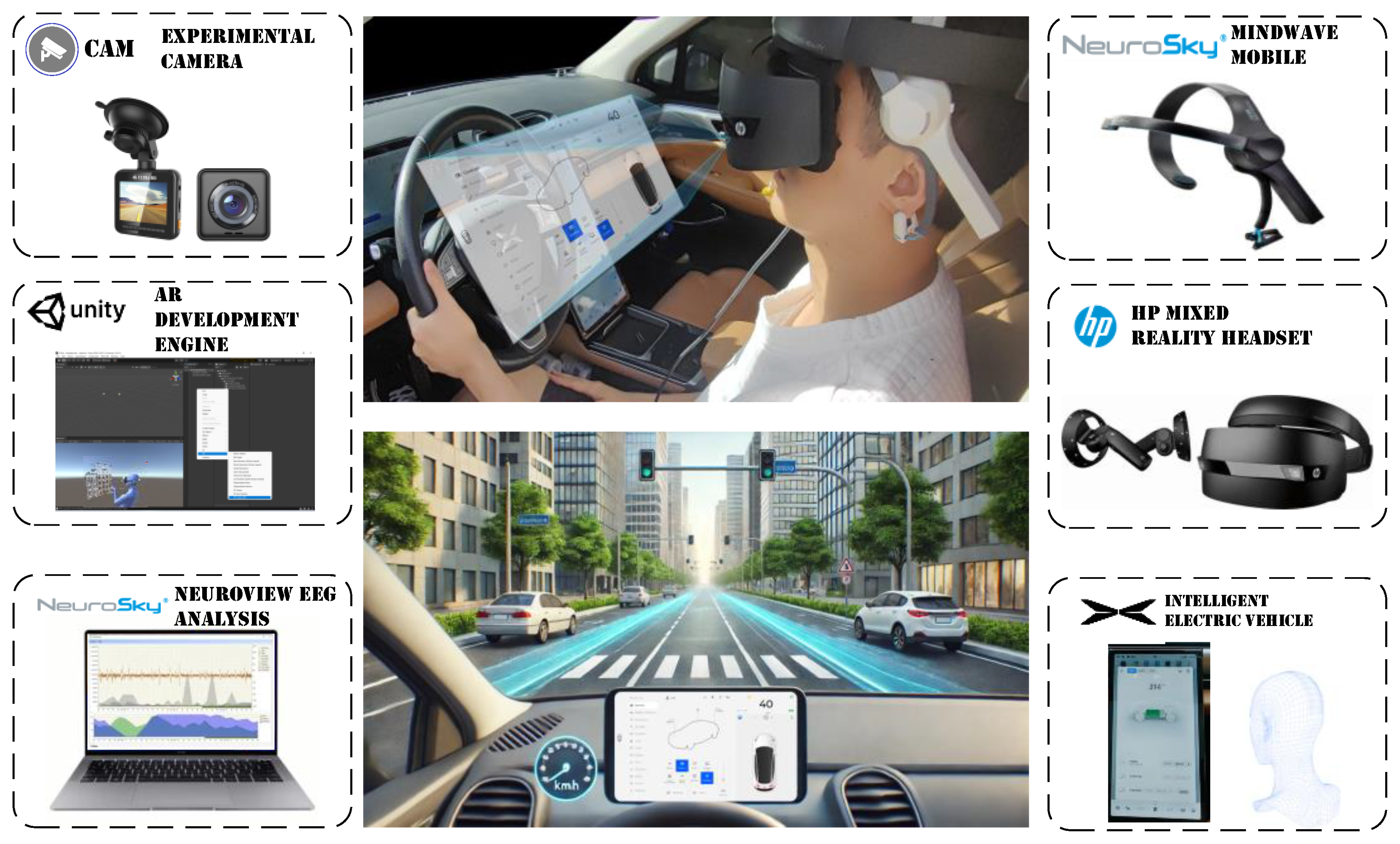
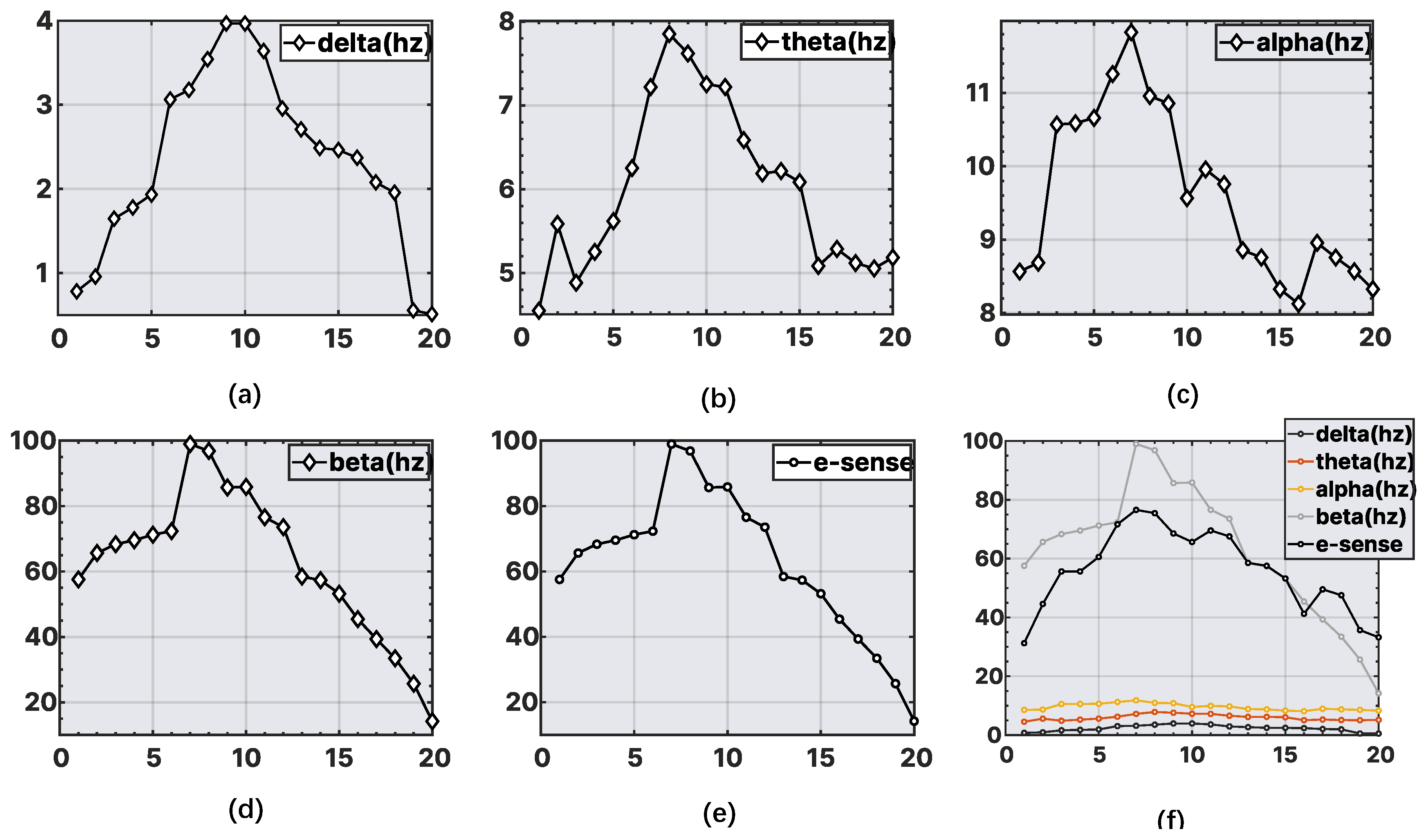
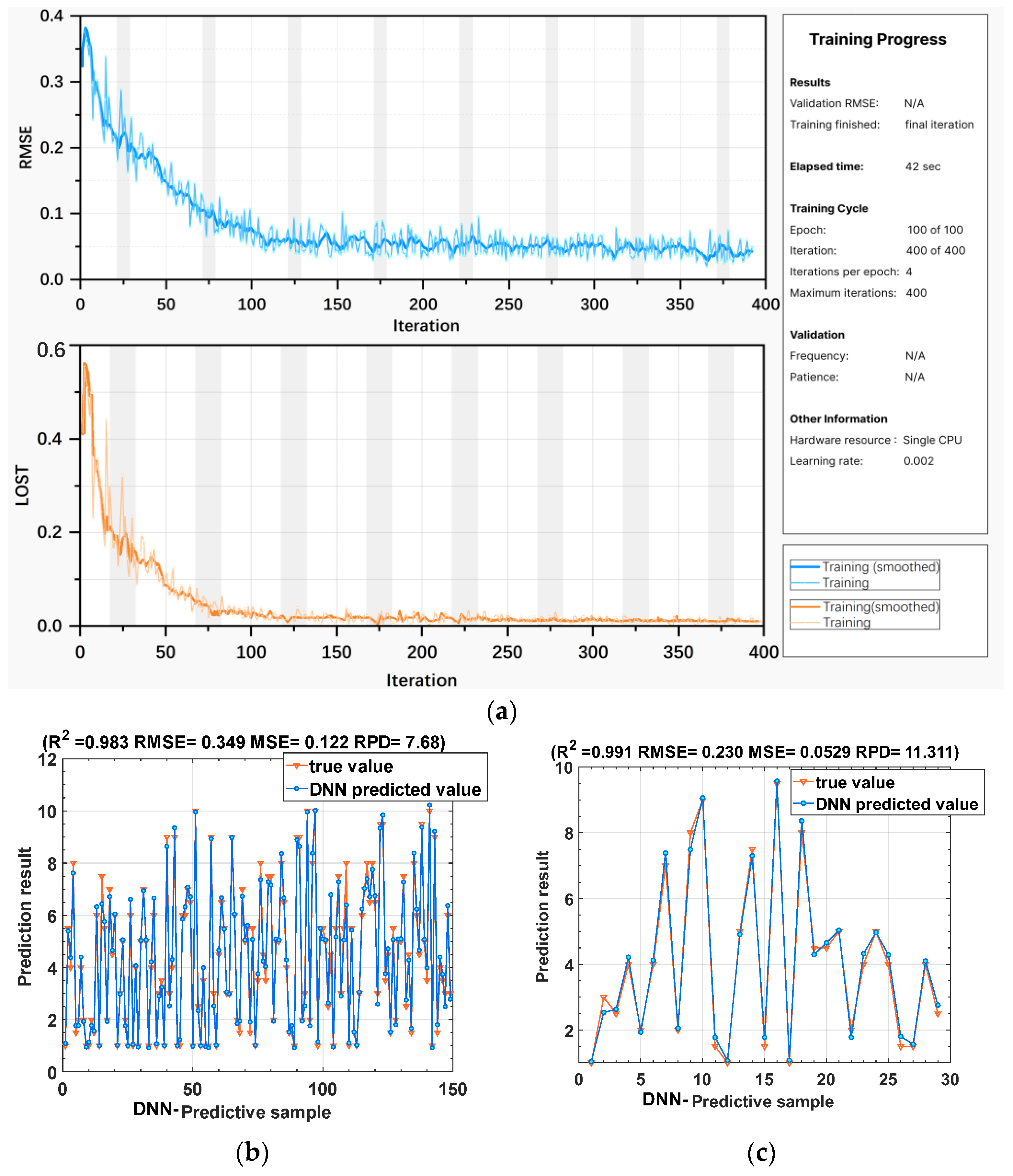

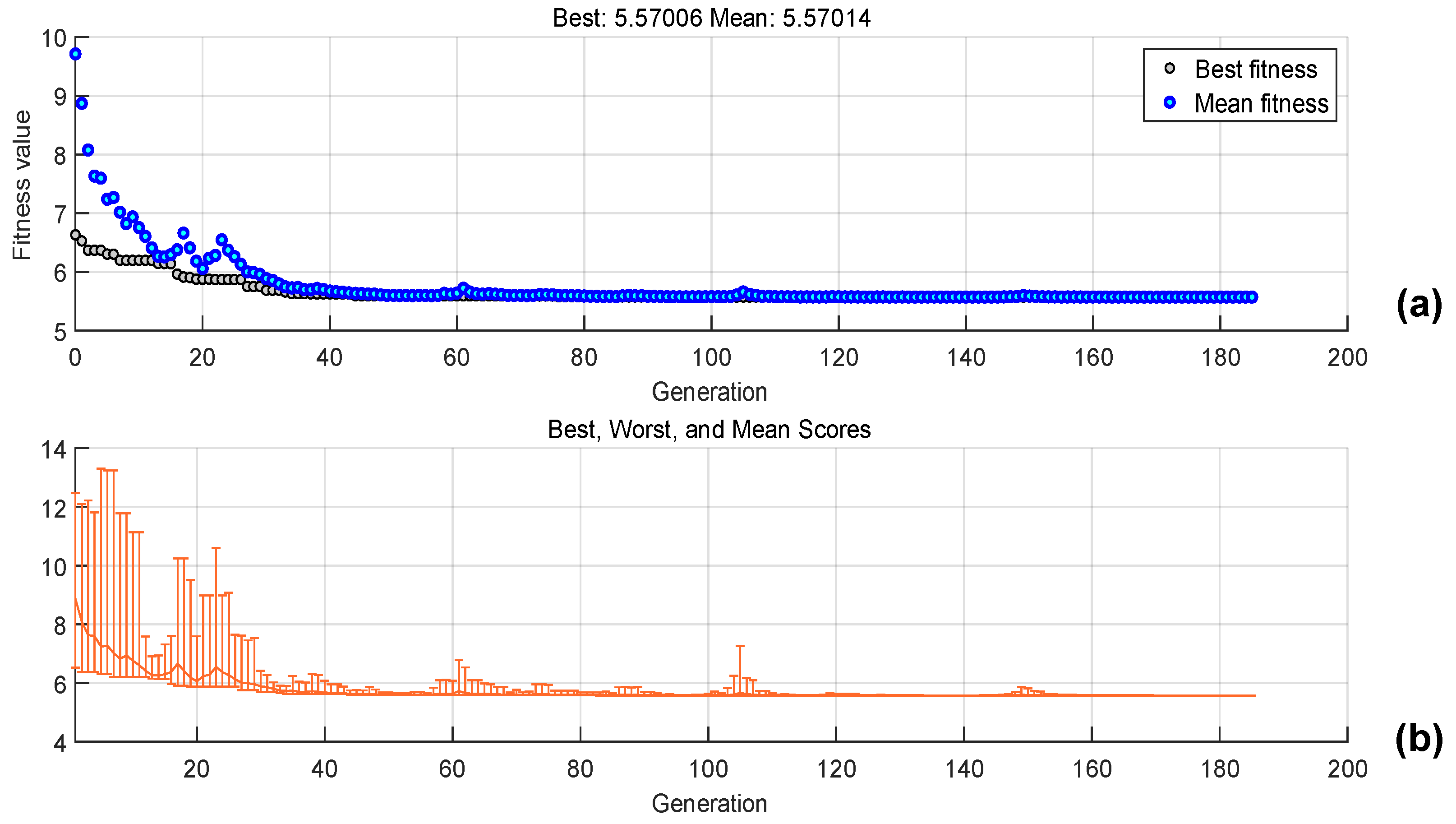
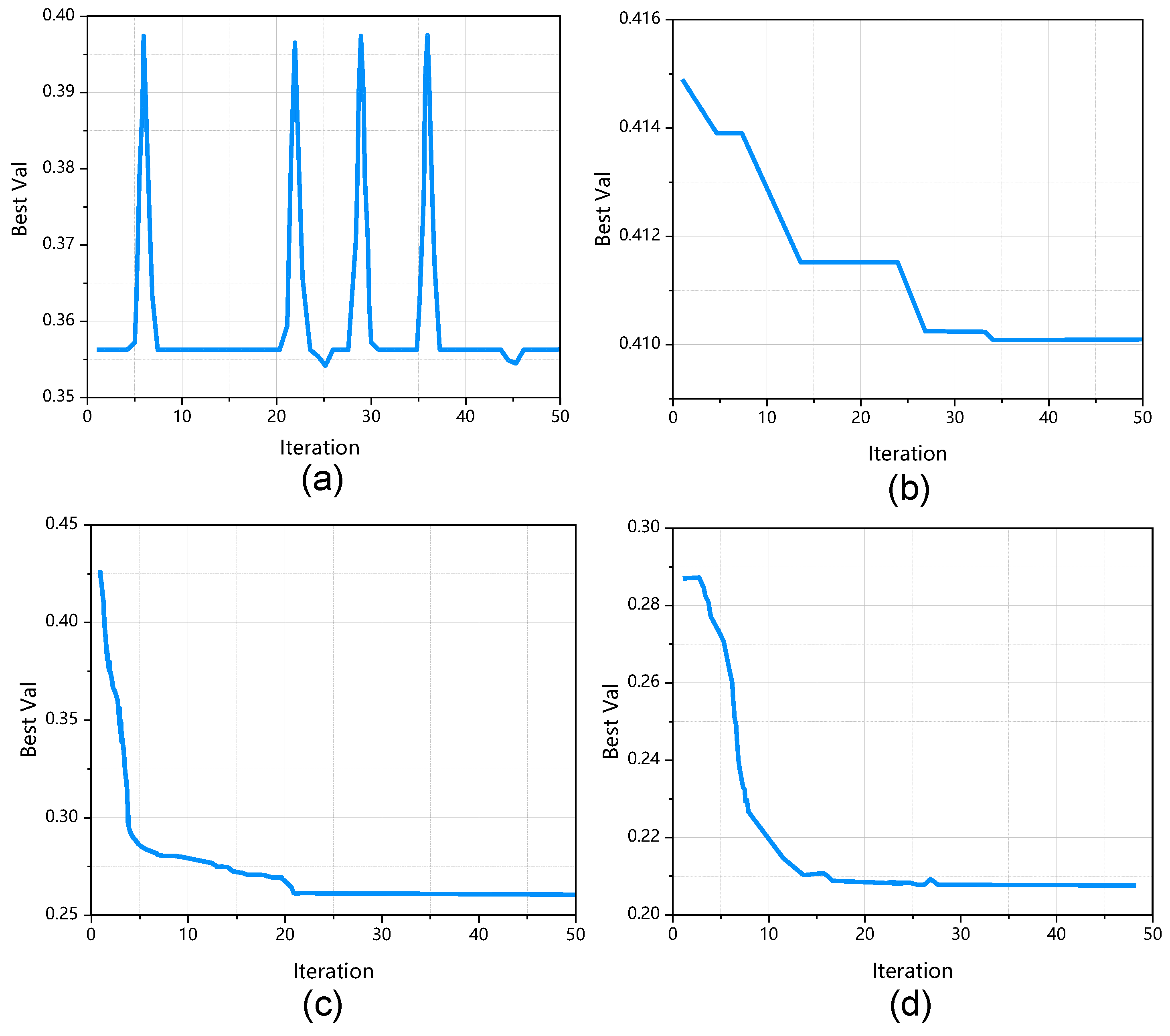
| Data Set Characteristics | Description |
|---|---|
| Total Data Samples | 56 |
| Training Data | 60% (34 samples) |
| Validation Data | 20% (11 samples) |
| Testing Data | 20% (11 samples) |
| Input Data | 26-bit binary encoding for HMI prototypes (e.g., layout, color, and feedback) |
| Output Data | Average e-Sense values indicating attention levels from EEG data |
| Cronbach’s Alpha | N of Items |
|---|---|
| 0.918 | 15 |
| KMO Sampling Suitability Quantity | 0.801 | |
|---|---|---|
| Bartlett’s test | Approximate chi-square | 111.907 |
| df | 55 | |
| Sig. | 0 | |
| Factor | Principal Component | ||||
|---|---|---|---|---|---|
| F1 | F2 | F3 | F4 | F5 | |
| Q1: Feedback: animation | 0.014 | 0.054 | 0.373 | 0.537 | 0.313 |
| Q2: Color | 0.379 | −0.129 | 0.683 | −0.085 | 0.023 |
| Q3: Layout | 0.646 | −0.210 | 0.067 | −0.308 | −0.341 |
| Q4: Perspective | 0.597 | −0.029 | −0.127 | −0.348 | −0.262 |
| Q5: Background | 0.571 | −0.383 | −0.070 | −0.100 | 0.033 |
| Q6: Interactive | 0.408 | 0.638 | 0.099 | −0.115 | −0.021 |
| Q7: Menu | 0.526 | −0.366 | −0.388 | 0.038 | 0.050 |
| Q8: Car Settings | 0.488 | 0.501 | 0.241 | −0.166 | 0.114 |
| Q9: Button | 0.572 | 0.463 | 0.043 | −0.021 | 0.177 |
| Q10: Gesture operation | 0.318 | −0.494 | −0.126 | 0.221 | −0.046 |
| Q11: Interactive Settings | 0.442 | 0.516 | −0.147 | 0.341 | −0.210 |
| Q12: Feedback: shake | 0.357 | 0.086 | −0.096 | 0.669 | −0.393 |
| Q13: Forms | 0.529 | −0.398 | 0.221 | 0.283 | 0.009 |
| Q14: Prompt | 0.270 | 0.265 | −0.641 | 0.038 | 0.419 |
| Q15: Icon | 0.452 | −0.265 | 0.057 | −0.023 | 0.663 |
| Principal Component | HMI Element | Chromosome Encoding |
|---|---|---|
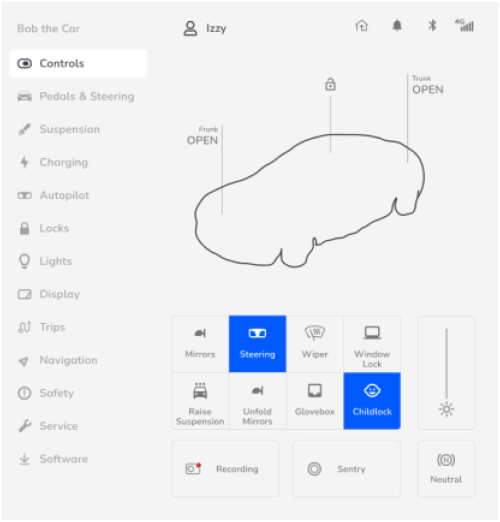 F1: Layout mode | Q3: Layout |  |
| Q4: Perspective |  | |
| Q5: Background |  | |
| Q7: Menu |  | |
| Q9: Button |  | |
| Q10: Gesture operation |  | |
| Q13: Forms |  | |
| Q15: Icon |  | |
| F3: Color mode | Q2: Color mode |  |
| F4: Feedback | Q1\Q12: animation/shake |  |
| F5: Prompt | Q14: Prompt |  |
| F2: Interactive | Q6\Q8\Q11: Car Settings |  |
| Delta | Theta | e-Sense | ||
|---|---|---|---|---|
| Delta | Pearson Correlation | 0.876 | 0.873 | |
| Sig. (2-tailed) | 0.000 | 0.000 | ||
| Theta | Pearson Correlation | 0.873 | 0.851 | |
| Sig. (2-tailed) | 0.000 | 0.000 | ||
| e-Sense | Pearson Correlation | 0.873 | 0.851 | |
| Sig. (2-tailed) | 0.000 | 0.000 | ||
| Model | Performance Index | ||||
|---|---|---|---|---|---|
| MSE | MAE | RMSE | R2 | Training Time (s) | |
| SVMs-GA | 0.45 | 1.89 | 0.67 | 0.85 | 145.127 |
| DT-GA | 0.34 | 1.94 | 0.58 | 0.88 | 95.87 |
| POS-GA | 0.25 | 0.36 | 0.5 | 0.9 | 69.93 |
| DNN-GA | 0.22 | 0.31 | 0.23 | 0.99 | 73.21 |
Disclaimer/Publisher’s Note: The statements, opinions and data contained in all publications are solely those of the individual author(s) and contributor(s) and not of MDPI and/or the editor(s). MDPI and/or the editor(s) disclaim responsibility for any injury to people or property resulting from any ideas, methods, instructions or products referred to in the content. |
© 2024 by the authors. Licensee MDPI, Basel, Switzerland. This article is an open access article distributed under the terms and conditions of the Creative Commons Attribution (CC BY) license (https://creativecommons.org/licenses/by/4.0/).
Share and Cite
Jin, X.; Teng, J.; Lee, S.-m. Optimizing HMI for Intelligent Electric Vehicles Using BCI and Deep Neural Networks with Genetic Algorithms. World Electr. Veh. J. 2024, 15, 338. https://doi.org/10.3390/wevj15080338
Jin X, Teng J, Lee S-m. Optimizing HMI for Intelligent Electric Vehicles Using BCI and Deep Neural Networks with Genetic Algorithms. World Electric Vehicle Journal. 2024; 15(8):338. https://doi.org/10.3390/wevj15080338
Chicago/Turabian StyleJin, Xinmin, Jian Teng, and Shaw-mung Lee. 2024. "Optimizing HMI for Intelligent Electric Vehicles Using BCI and Deep Neural Networks with Genetic Algorithms" World Electric Vehicle Journal 15, no. 8: 338. https://doi.org/10.3390/wevj15080338
APA StyleJin, X., Teng, J., & Lee, S.-m. (2024). Optimizing HMI for Intelligent Electric Vehicles Using BCI and Deep Neural Networks with Genetic Algorithms. World Electric Vehicle Journal, 15(8), 338. https://doi.org/10.3390/wevj15080338








